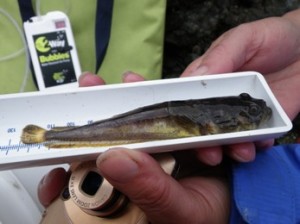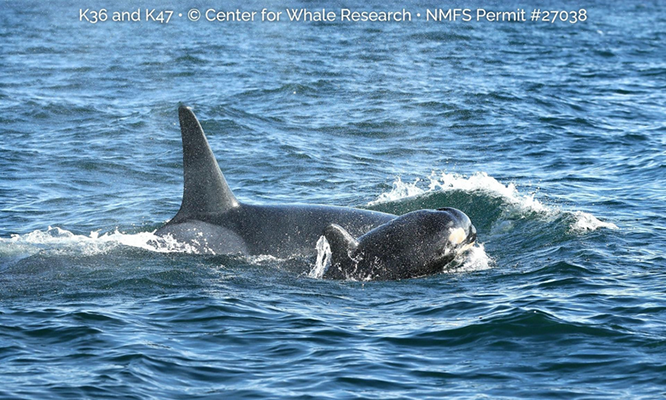By Russel Barsh
Hummmmm… With its dark purple skin and rows of gold colored, light sensitive buttons the Plainfin Midshipman (Porichthys notatus) is not only beautiful, but also unusual and aptly named. Adult Midshipmen congregate and mate around Indian Island in May and June, and begin to disperse in August, leaving behind thousands of tiny golden-buttoned offspring that are identical to their parents in all but size.
Midshipmen first attracted the attention of biologists in 1980, when scientists in southern California discovered that the low hum or “grunting” often heard by fisherman handling these fish, is actually a love song: an underwater mating call of the male Midshipman to attract females to the nest he has dug under rocks in the inter-tidal zone. Once mated, the male will accept and guard the female’s eggs until they hatch: alone and silent.
But the strange story of the Midshipman took a sordid turn in the 1990s, when Richard Brantley and Albert Bass found that some of males do not dig nests, and cannot sing a note. Instead, they lay in wait near the nests of other males, and quickly slip in when a female appears. Cheating males are actually smaller than males that sing, but they make up for their diminutive stature by being several times more fertile. Evolution has led to two complementary male reproductive strategies in Midshipmen. Comparisons with the human dating scene could, well, be good material for a song!
**If you are reading theOrcasonian for free, thank your fellow islanders. If you would like to support theOrcasonian CLICK HERE to set your modestly-priced, voluntary subscription. Otherwise, no worries; we’re happy to share with you.**









Fantastic. The parallels are wonderful to ponder. Now… how will Russel spin this for the kids?